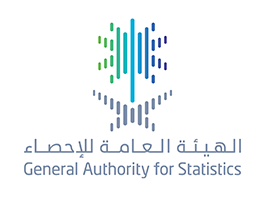
السعودية وكوريا الجنوبية توقعان مذكرة تفاهم في مجال الإحصاء
Within the joint committee meetings events on the occasion of completing 55 years in the capital city Seoul
Saudi Arabia and South Korea Signed a Memorandum of Understanding in the Field of Statistics
Saudi Arabia and South Korea signed on Friday 7th of Safar 1439 H (27th of October 2017) in Seoul the capital city of South Korea a memorandum of understanding (MOU) to cooperate in the field of statistics. It aims to establish a cooperation between the two countries in the field of statistics by exchanging administrative and technical experiences that are related to the work of official statistical entities. Moreover, the signing ceremony was held within the “Saudi-Korean” joint committee meetings events on the 26 and 27 of this October. These events were held in the capital city of Korea on the occasion of completing 55 years of relationship between The Kingdom and Korea. The memorandum was signed by his excellency the president of GaStat Dr.Fahad Bin Sulaiman AL-Tukhaifi from the Saudi side and by the official commissioner of the Korean statistics Mrs. Hwang Soo Kyeong from the Korean side. A number of the two countries officials have attended the ceremony. In addition, his excellency the president of GaStat Dr.Fahad Bin Sulaiman AL-Tukhaifi expressed in his speech for this occasion his thanks to the Korean side for the warm reception and gracious hospitality that the Saudi delegation had. He also assured on the deep cooperative relationship between the two countries since 55 years ago until now in a noticeable improvement. He said" we are here today and more than half century of relationship between our countries have passed where the relations have improved remarkably in different fields, in which the economic interests have gathered the experts of the two countries on the tables of the commercial cooperation. Additionally, the special political relationships between the two countries have attributed in the advancement towards cooperation fields that are more distinguished. Since the kingdom of Saudi Arabia and the Republic of Korea have agreed on establishing diplomatic relations at the ambassadorial level on 16th of October 1962 until this day, the two countries are keeping a strong cooperative relationship as partners and they represent a special model for the West-East convergence”. Dr.AL-Tukhifi added that signing the statistical memorandum between the two countries came along with the new Saudi Vision 2030 where it opens wider horizons for cooperation. The statistical partnership is a qualitative partnership to transfer successful experiences and effective cooperation in the fields of statistical data and information which is considered the strongest cornerstone towards future.
It is noteworthy to mention that the statistical memorandum between Saudi Arabia and south Korea includes points for cooperative work in developing technical mechanisms necessary for collecting and publishing statistics according to international standards, determining the fundamentals of statistical databases in different statistical fields, exchanging experiences concerning the necessary requirements for establishing an information central system that is linked automatically with all public entities [and their activation mechanisms], developing statistical work in governmental entities in addition to developing government statistical plans, policies, and mechanisms, exchanging statistical awareness programs and organizing joint seminars and workshops which discuss cooperation issues.
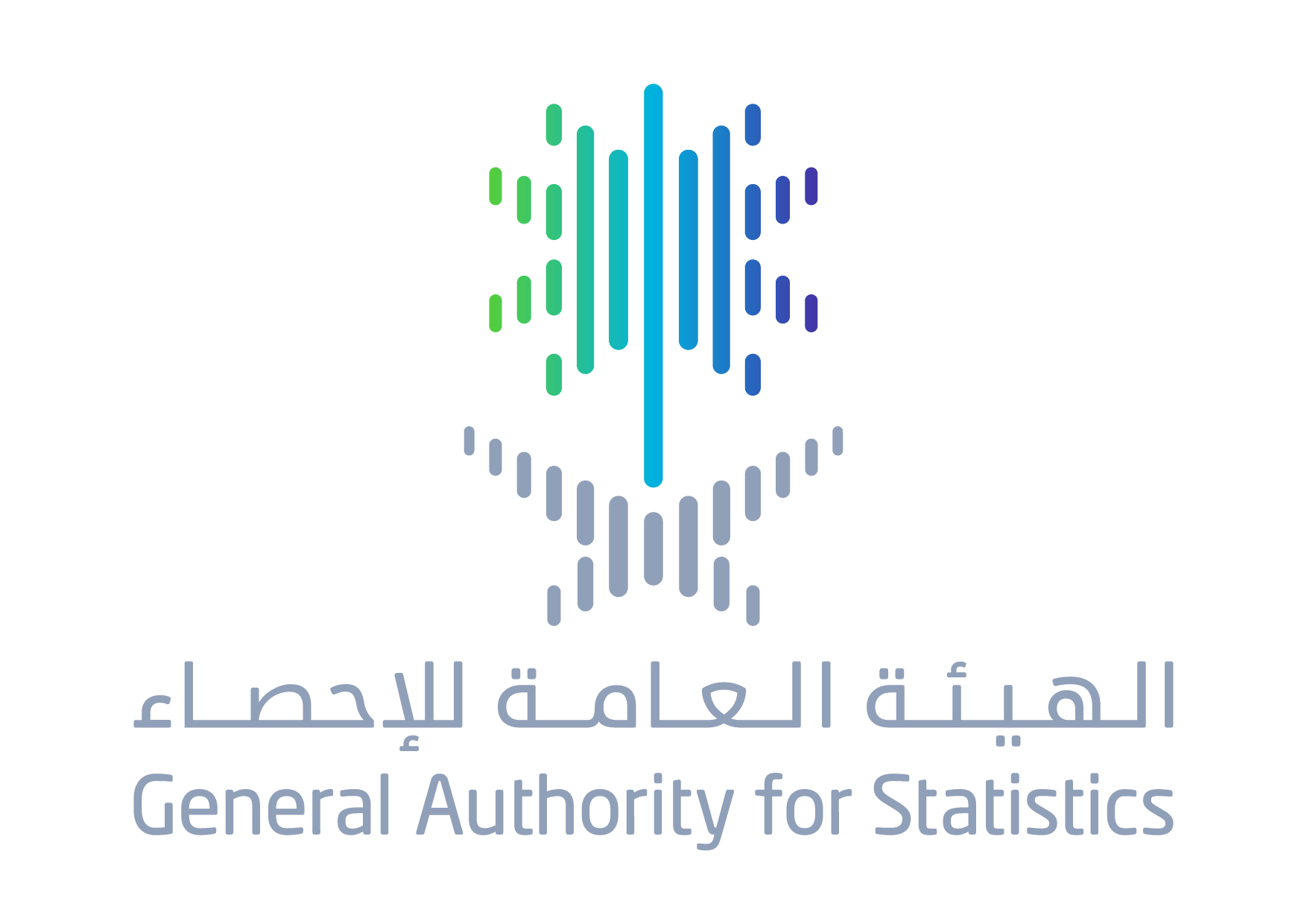
الهيئة العامة للإحصاء: انخفاض الرقم القياسي لأسعار العقار (6,3 %) مقارنة العام بالماضي و استقراره مقارنة بالربع الثاني
GaStat: Real Estate Index Decreased by (6.3%) compared to the previous year and stabilized compared to Second Quarter
On Tuesday Safar 4th, 1439 (October 24th,2017), GaStat issued its quarterly indicator of the real estate price general index in the Kingdom of Saudi Arabia for the third quarter (2017) and published it through its official website www.stats.gov.sa . This indicator is based on available registry data of the Ministry of Justice regarding real estate transactions. This indicator is an essential tool that supports entities which make economic and statistical decisions regarding the real estate price movements and future forecasts during different periods of time. The indicator includes three main sectors consisting of many real estate types: residential sector (piece of land, building, villa, apartment, and house), commercial sector (piece of land, building, shop, gallery and commercial centre), and agricultural sector which only includes agricultural land.
The index of real estate prices for the third quarter 2017 recorded a relative stability compared to the previous quarter (second quarter 2017), reaching (84.9) in the third quarter 2017.
The report attributed the stability of the real estate price index for the third quarter of 2017 to the varying percentage of change in the main sectors composing the indicator. The commercial sector witnessed a decline by (1.0%), the residential sector witnesses an increase by (0.2%), while the agricultural sector was stable without any relative change.
The indicator recorded a decline of (6.3%) compared to the same quarter of the previous year (third quarter 2017). The report attributed this decline to the decline in the main sectors composing the indicator: the residential sector (7.9%), the commercial sector (10.9%) and the agricultural sector (1.0%).
GaStat: The Saudi unemployment rate is 12.8% in the 2nd Quarter (2017)
Labor Market Bulletin Includes 67 Statistical indicators
GaStat: The Saudi unemployment rate is 12.8% in the 2nd Quarter (2017)
The General authority for Statistics (GaStat) published the Labor Market Bulletin for the second quarter of 2017 on Sunday Muharram 11th,1439H (Corresponding to October 1st,2017) which provides comprehensive data and indicators on the labor market in the Kingdom from April 1st to June 30th, 2017 (Corresponding to Rajab 15th to Shawwal 6th, 1438H) to support decision and policy makers regarding labor force. It also contributes in building a database on the labor market in the Kingdom that can be used to prepare and plan future social and economic development programs.
The quarterly bulletin includes 67 statistical indicators which contain data and indicators from the Labor Force Survey estimates and labor market data from the administrative records of the relevant entities (Ministry of Labor and Social Development, Ministry of Civil Service, General Organization for Social Insurance(GOSI), Human Resources Development Fund and National Information Center) applying international standards in this area.
The results of the bulletin for the second quarter of 2017 indicated that the total number of employees from the data of administrative records in the Kingdom of Saudi Arabia reached (13,841,158) individuals compared to (13,889,137) for the first quarter of 2017.
According to the results of the bulletin also from the data of administrative records in the government agencies for the second quarter of 2017, the total number of Saudis seeking work reached (1,075,933) individuals, (216,352) of them are males and (859,581) are females.
The results also showed that the highest percentage of Saudis seeking employment was among the age group (25-29), which is (34.2%). Also according to the results of the administrative records data, nearly half of the Saudi job seekers hold university degrees reaching (50.5%).
The results of the bulletin showed that the unemployment rate in Saudi Arabia for the Saudi population (15 years and over) from the Labor Force Survey estimates for the second quarter 2017 reached (12.8%), (7.4%) are males and (33.1%) are females. And the unemployment rate in the Kingdom for the total population (15 years and over) is (6.0%), (3.3%) are males and (22.9%) are females.
The results also showed that (11.6%) of the unemployed Saudis had previously worked, and (32.9%) of unemployed Saudis who had previously worked left their jobs due to dismissal from the employer. The survey results also showed that (9.6%) of unemployed Saudis have already been trained.
Regarding the economic activity rate of total population (15 years and over) it reached (54.2%), divided between males (78.2%) and females (18.7%). In its bulletin, GaStat also explained that the economic activity rate for total Saudi population (15 years and over) reached (40.3%).
The bulletin included a large number of detailed data on workers according to the regulations they are subject to, nationality, sex, age, administrative region and educational level, as well as data for job seekers, average monthly wages, working hours and domestic workers.
For more details, you can view the bulletin through Gastat’s official website: www.stats.gov.sa
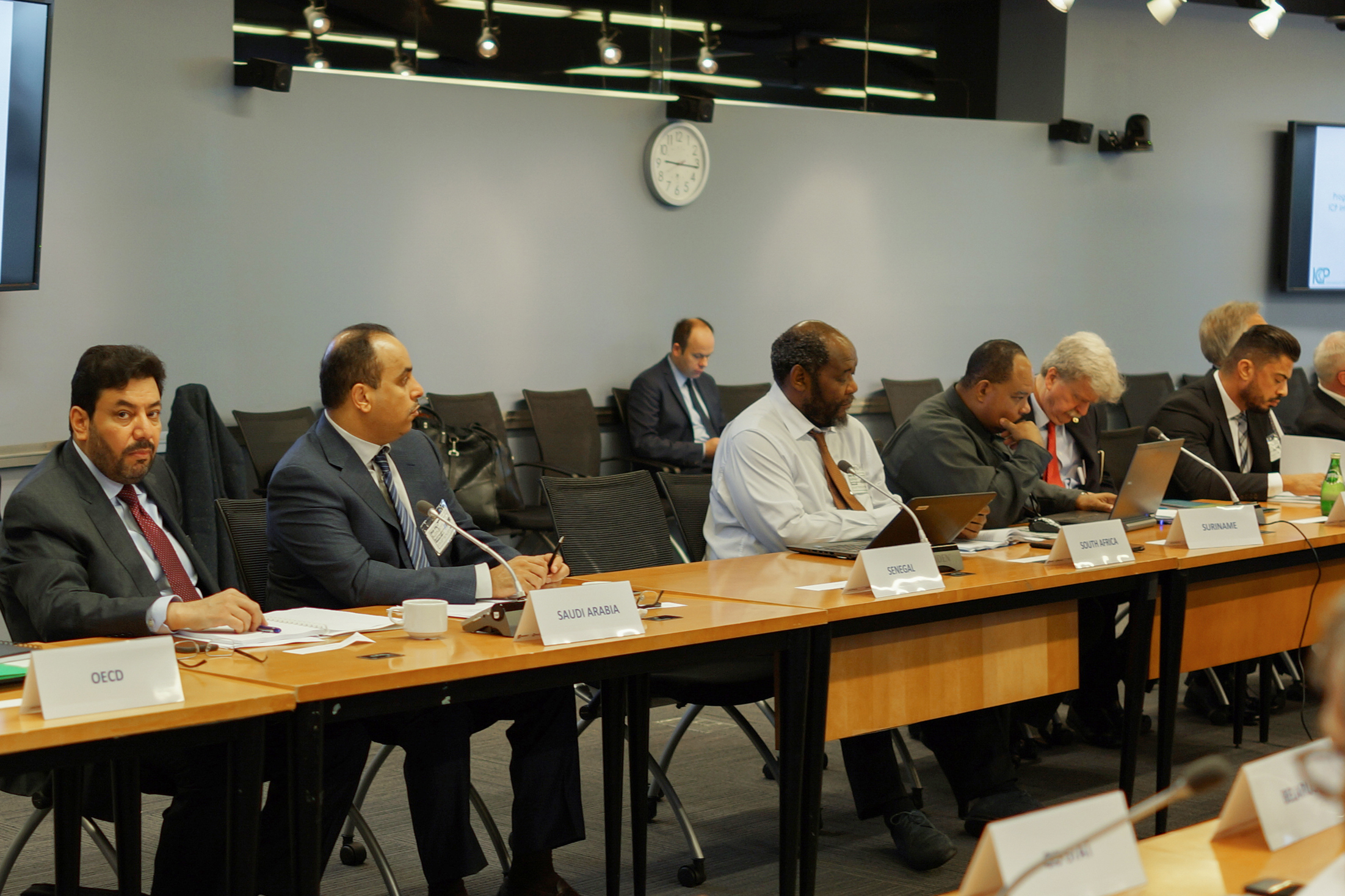
د. التخيفي : تميز المملكة العربية السعودية في الإحصاء قادها لعضوية المجلس والمشاركة في اجتماعاته الدورية
UN International Comparison Program board of directors holds second meeting
Dr. Altekhaifi: KSA's distinctive work at statistics leads to council membership and participation in recurring meetings
Saudi Arabia has participated at the second meeting of the board of directors of the International Comparison Program (ICP), which was held at Washington D.C. early this week. His Excellency, president of the General Authority for Statistics, Dr. Fahad bin Sulaiman Altekhaifi, confirmed that the program’s work and results will help shape policies for global comparison to support statistical products of the participating countries. It will also enable the General Authority for Statistics to access the best global practices for statistics for the purpose of improving and developing the statistical work. Also, it will raise the quality of the data, which will reflect positively on the decisions for development that rely mainly on statistics.
On the other hand, his excellency Dr. Altekhaifi pointed out that the board of directors, which has 11 countries including Saudi Arabia, which represents west Asia, has looked into the progress made when implementing the 2017 cycle in the participating areas. The council also specified a list of research topics including, implementing a rolling survey approach and building Purchasing Power Parity (PPP) time series, integrating ICP and Consumer Price Index (CPI) activities, Streamlining the process of establishing product lists and the use of importance indicators, improving the availability and quality of input data for rents, government services, and construction, streamline the use of productivity adjustments for government services, fine tuning global linking procedures, quality assurance of resulting PPPs and measures of reliability and other topics related to statistical work.
Dr. Altekhaifi added that the ICP selecting of Saudi Arabia for the membership at the 2017-2019 cycle came as a result of the positive role of the General Authority for Statistics in different statistical programs organized by the UN. It also confirmed the kingdom’s effective role on the global map of statistics. Moreover, it reflects the results of the strategic transformation of the kingdom’s Statistic sector, which the leadership cares for and supports due to its role in aiding the national development decisions. The ICP, which is under the supervision of the World Bank, is a partnership program for statistics on a global level. It is based on a statistical system that is connected with economic analysis. It uses statistical methods to derive the necessary data to calculate the PPP for about 200 countries and economies worldwide. It will facilitate the use of PPP as currency converters. That will allow for the comparison of the total economic indicators and the economic situations of countries worldwide.
It is noteworthy to mention that the ICP board of directors is compiled of executives, chairpersons, and leading experts in 11 statistical devices participating in the program. They are distributed according to the regional areas: Africa, Asia, Pacific Islands, Latin America, the Caribbean, West Asia, Commonwealth of Independence States, European Union, non-European Union States, members of the organization for Economic Cooperation and Development, representatives of the International Monetary Fund, World Bank, UN Statistics Division, and the Inter-Agency Coordination Group.
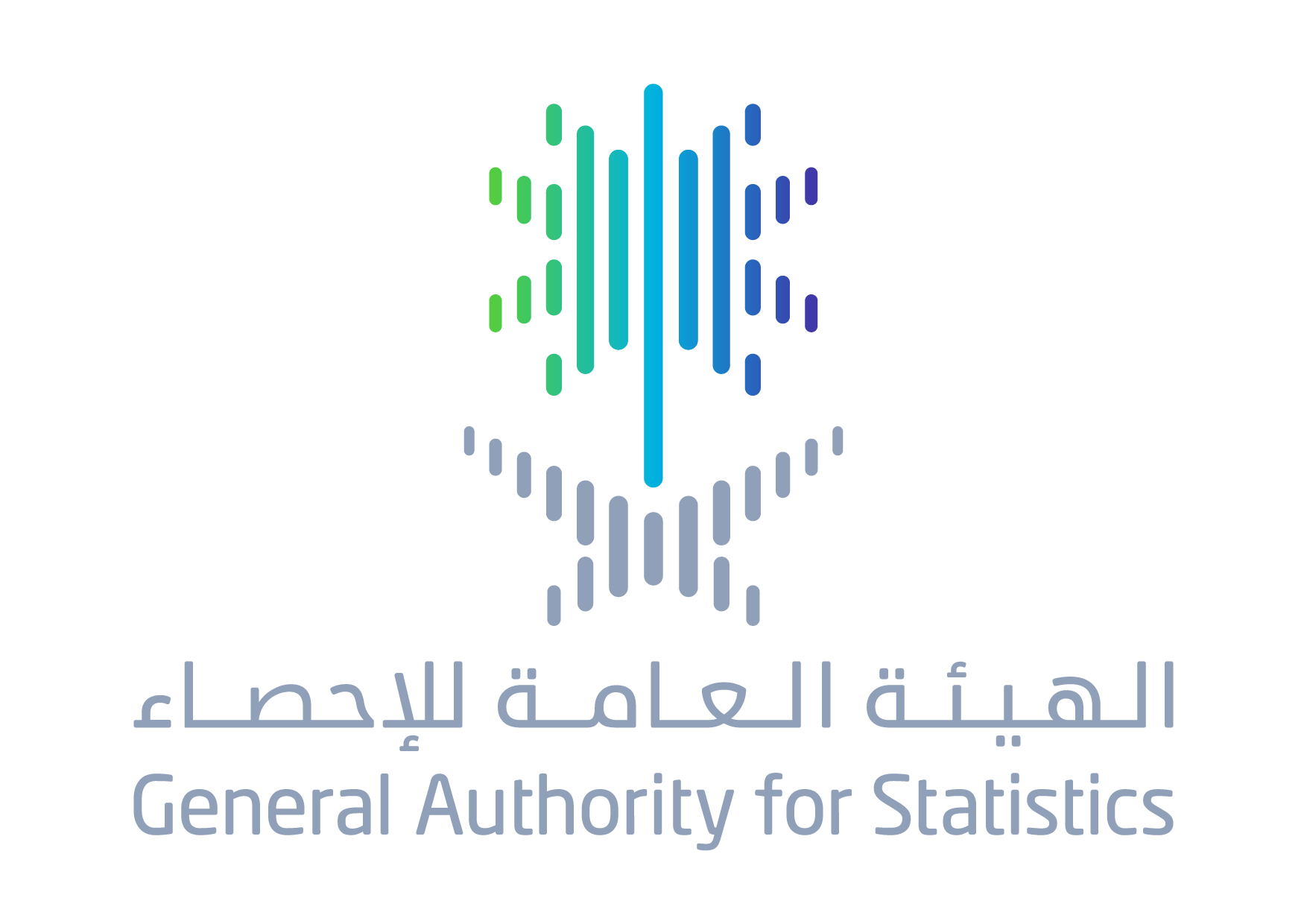
الهيئة العامة للإحصاء : ارتفاع الرقم القياسي لأسعار الجملة لشهر سبتمبر
GaStat: Wholesale Price Index Increases in September
On Tuesday, the 24th of Muharram 1438 H/ 25th of October 2016 AD, the General Authority for Statistics (GaStat) issued the monthly indicator of Saudi wholesale price index for the month of September. It is now published on its website www.stats.gov.sa . The indicator recorded (163.1) with 0.3% increase in September 2016, compared to last month (August) in which it recorded (162.6).The indicator includes ten main sections; Food and living animals section, beverages and tobacco section, raw materials except fuel, mineral fuel and related products section, Fats and oils section, chemical materials and related products, manufactured commodities classified by material section, transportation equipment and machines section, diverse manufactured commodities section, and other commodities section.The report attributed that increase to the rise of three main sections that constitute this indicator; transportation equipment and machines section with (0.9), Food and living animals section with (0.6%), manufactured commodities classified by material section with (0.1%).On the other hand, six sections have decreased: raw materials except fuel section with (1.4%), diverse manufactured commodities section with (0.4%), beverages and tobacco section with (0.3%), Fats and oils section with (0.3%), chemical materials and related products with (0.1%), other commodities with (0.1%), However, the sections of mineral fuel and related products did not change and remained stable.The authority indicated that the Saudi wholesale index measures the average of change in the prices of commodities and services that are sold in the primary markets. What matters here is the price change only. Therefore, the changes that result from the differences in quality, quantity, shipping method, or any other influencing factor in order to get the net price are excluded. This index is provided to everyone, and conducted all over Saudi Arabia.It is worth mentioning that the wholesale price index is used to record any change in the prices of local or imported commodities. In addition to monitoring the price directions and the status of markets and costs of living. Furthermore, it is used in preparing the national accounts by protecting the income and national aggregates from the influence of price change.
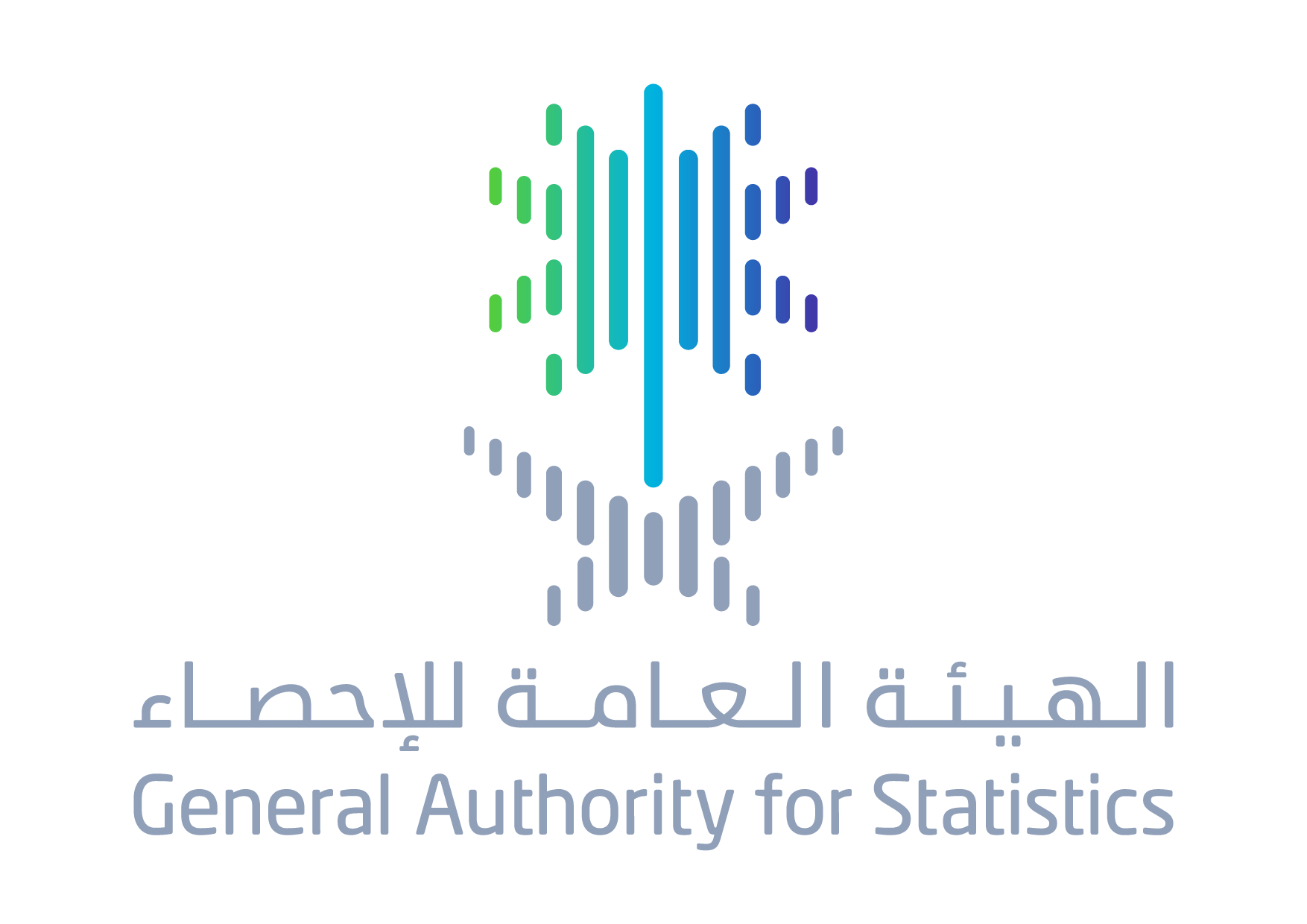
" الإحصاء “: استقرار مؤشر الرقم القياسي لتكلفة المعيشة لشهر سبتمبر الماضي
(6) sections decreased, and (4) rose.
"GaStat" : Cost of Living Index remains stable in September 2016
On Monday, the 23th of Muharram 1438 H/ 24th of October 2016 AD, the General Authority for Statistics (GaStat) issued the monthly indicator of Saudi cost of living index for the month of September. It is now published on its website www.stats.gov.sa .The indicator didn't record any relative change compared to the previous month.The monthly report indicates that the Saudi cost of living index indicator recorded (137.9) in September 2016 without any relative change compared to August 2016. It recorded an increase above (133.9) from September 2015, recording a rise of 3.0% on an annual basis.The report attributed the monthly increase to the rises of four of the main sections that constitute this indicator; clothes and shoes section with (0,7%), food and beverages with (0.3%), telecommunication section with an increase of (0.2%) , and finally, furniture ,appliances, and maintenance with an increases of (0.1%).On the other hand, six sections have decreased; commodities and services with a decrease of (1.0%), restaurants and hotels with a decrease of (0,7%), literacy and recreation with (0.4%), transportation with a decrease of (0,2%), housing, water, electricity, gas, and other types of fuels with a decrease of (0.2%), finally, health section with (0.1%).However, the sections of tobacco and education did not change and remained stable.The cost of living index indicator issued monthly by GaStat aims at providing data about the prices of commodities and services that are in the consumer basket. It also aims at providing data about the cost of living indices within a time series. (The consumer basket) refers to the actual group of commodities and services that are recorded during the household expenditure and income survey. The relative distribution of the commodities and services consumption inside the consumer basket is extracted to make it the base stone in the process of indices calculation. The cost of living indices are used to measure any change in the prices of commodities and services that are purchased by consumer. Moreover, it is used as an accurate indicator that measures the economic inflation and recession. It is also used in statistical and economic analyses that are associated with prices movement and anticipations in different times. Data are collected by conducting interviews. The sources addresses are clarified to the interviewers to facilitate their task. The sources distribution in one city must cover all available commodities and services with all levels.
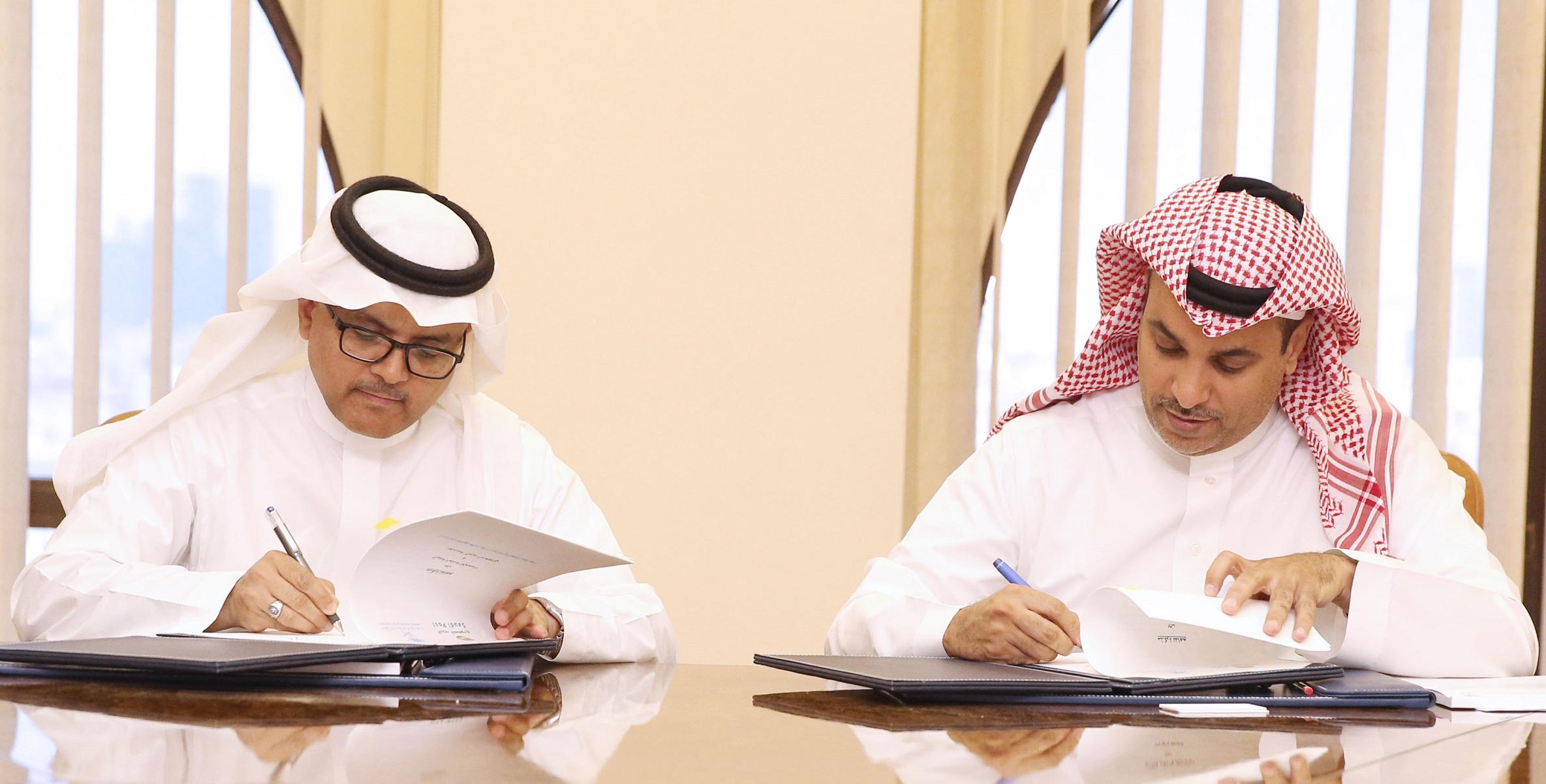
" العنوان الوطني " يربط البيانات بالموقع لرفع جودتها ويؤسس مرجع مكاني موحد للإحصاءات
GaStat and Saudi Post Institutions Sign a Memorandum
" National Address" Links Data with the Website to Raise Its Quality, and Establishes a Statistics Unified Spatial Reference
GaStat starts using the national address map, which is verified by Saudi post institution, to be the base of the statistical data collection operations. It also links the data of national address in the statistical field operations. On Sunday, 22 of Muharram 1438 H, GaStat and Saudi post institution signed a memorandum to enhance the collaboration between the two entities and activate the use of national address as a geographical base of data and statistics in Saudi Arabia, so that it can be used in the 2020 population and housing census.
Dr. Fahad bin Sulaiman Al-Tukhaifi, president of the General Authority for Statistics, said that the collaboration with Saudi post institution is all about producing and using the geospatial data and link them with the statistical data through surveys and administrative records conducted periodically and regularly by GaStat. The main objective is achieving integration between them to provide high quality statistical products that collaborate in supporting policy and decision makers. He added, unifying the efforts between the authority and the institution in the fields of geographical and spatial data collaborates in unifying the data sources by an updated, certified, and unified Saudi map. In its coming field works either for households or establishments, GaStat will provide statistical data and links them with the national address geographically, so that they can collaborate in providing high quality data in all fields. Dr. fahad clarified that this cooperation includes publishing the statistical data in a way of geographical distributions by using the national address map, and setting unified technical principals between the two entities when dealing with data and raising the statistical awareness.
On the other hand, Dr. Osamah bin Mohammed bin Saleh Altaf, Saudi post institution acting president, indicated that the Saudi post is working on the collaboration with GaStat within the Saudi post institution strategy which shows the Saudi post capabilities in the field of geospatial information and national address for all entities, in addition to providing the statistical data and link them geographically with the unified national address.
Dr. Altaf asserted that this agreement is one of the important agreements that the Saudi post made. It is considered a crucial addition in the field of accurate national statistics publishing through the national address digital maps which use the most recent international techniques.
He added, the Saudi post wants to exchange its experience and provide its services after building a national organization of the standard addresses of every Saudi location and building by using the most recent techniques, geographical information systems, and addresses standards and principals. He stressed on the importance of using the national addresses as they are considered a base infrastructure that all government electronic services and commerce rely on, so that citizens and foreigners all over Saudi Arabia get benefited from its programs.

الهيئة العامة للإحصاء تبدأ العمل بالهيكلة الجديدة
New (Statistical, Creative, and Awareness) Departments to Cope with the Requirements of the New Saudi Vision and National Transformation
GaStat Starts Working with the New Structure
The General Authority for Statistics starts working with the new organizational structure. A general administration for natural resources and knowledge statistics has been created. It works beside the general administration of economic statistics, the general administration of social statistics, field statistics departments, methodologies departments, creativity departments, and awareness departments.
GaStat president, Dr. Fahad bin Sulaiman Al-Tukhaifi said that working with this new organizational structure is a response to the 2030 Saudi vision and 2020 national transformation program. The next phase needs integrated efforts from the statistical sector, so the sector must work in a distinct way as it is the only official sector that is responsible for the production of data, information, and statistics, which reflect the developments in Saudi Arabia.
Dr. Fahad clarified that the new structure, which has been authorized since the first day of this Muhharam, is a way that guarantees achieving the authority's strategic goals that are represented in enhancing the efficiency and quality of statistical services and products. Moreover, it makes these services more comprehensive and beneficial. It also helps to raise the satisfaction level of all clients and beneficiaries, gives the authority a positive reputation in the society, promotes the statistical sector level, and builds a strong authority.
Al-Tukhaifi added that this new structure is based on the statistical development' national strategy aspects, covering five aspects that guarantee the efficiency of the statistical sector in Saudi Arabia. The first aspect is using the statistical data and information, which aims at improving the use of statistical data and information in Saudi Arabia. This would fulfill all the users' needs by providing easy and on time statistical data and information. There is also the aspect of statistical data and information production, which aims at enhancing the field operations such as censuses, surveys, and researches. Furthermore, it enhances using the most recent standards and classifications in collecting, analyzing, and publishing data. The third aspect is the recent technologies. It aims at using the most recent technologies in all the phases of the statistical and administrative work. It provides a high quality IT infrastructure. The fourth aspect is the communication and awareness, which aims at enhancing the statistical knowledge in society through education and awareness. It introduces those who work in the statistical sector with the concept of communication. The fifth aspect is about governance. Through this aspect, the authority is trying to set the principals that govern the statistical sector. This enhance the idea of "results based management" . It continuously develops the human resources and tries to recruit people with high capabilities.
As for the main components of the authority new structure, Dr.Fahad stated that the organizational structure has been made by a teamwork from the authority and some experts outside the authority. This structure was made to develop and improve the statistical work. It also positively collaborate in activating the strategic transformation through which the Saudi statistical work is going. It enhances the role of the entity that supervises and organizes the statistical work by transforming it into an independent authority that has a featured personality and administrative and financial independence. The teamwork worked on determining the tasks, duties, and regulations according to certified instructions that guarantee founding an effective and comprehensive statistical organization. This new organization focused more on the clients and raising the products quality, considering them the main dimensions of work. The new statistical organization has been built in a way that prevent duality in work and responsibilities. It also intends to make the organizational structure compatible with the authority’s strategy by collecting the harmonized activities in one sectors and administrative units to implement unified tasks. In this structure, Many administrations and departments have been founded to achieve the strategic goals.
Regarding the main components of the new organizational structure, the authority president revealed that the statistical and administrative work has been distributed among three main sectors headed by the vice presidents. These sectors include the statistical works sector, which contains general administrations of economic statistics, social statistics, and natural resources and knowledge statistics (new one). In addition to the independency of the statistical field works with a general administration of operations. There is also an administration specialized in methodologies.
As for the second sector, the statistical creativity and customer service sector, it is a totally new sector. However, the third sector represents IT and supporting services, as they are the main infrastructure of the authority’s statistical and administrative work. Moreover, the new structure includes a general administration of media and statistical awareness, which manages all the internal and external activities aiming at raising statistical awareness. It also includes a general administration of projects and strategic planning which implements and prepares the authority’s strategies and plans. Furthermore, there is a general administration of support and institutional excellence that manage, prepare, and update all the policies, operations, and procedures. The later also supervises the programs of total quality department and knowledge department.
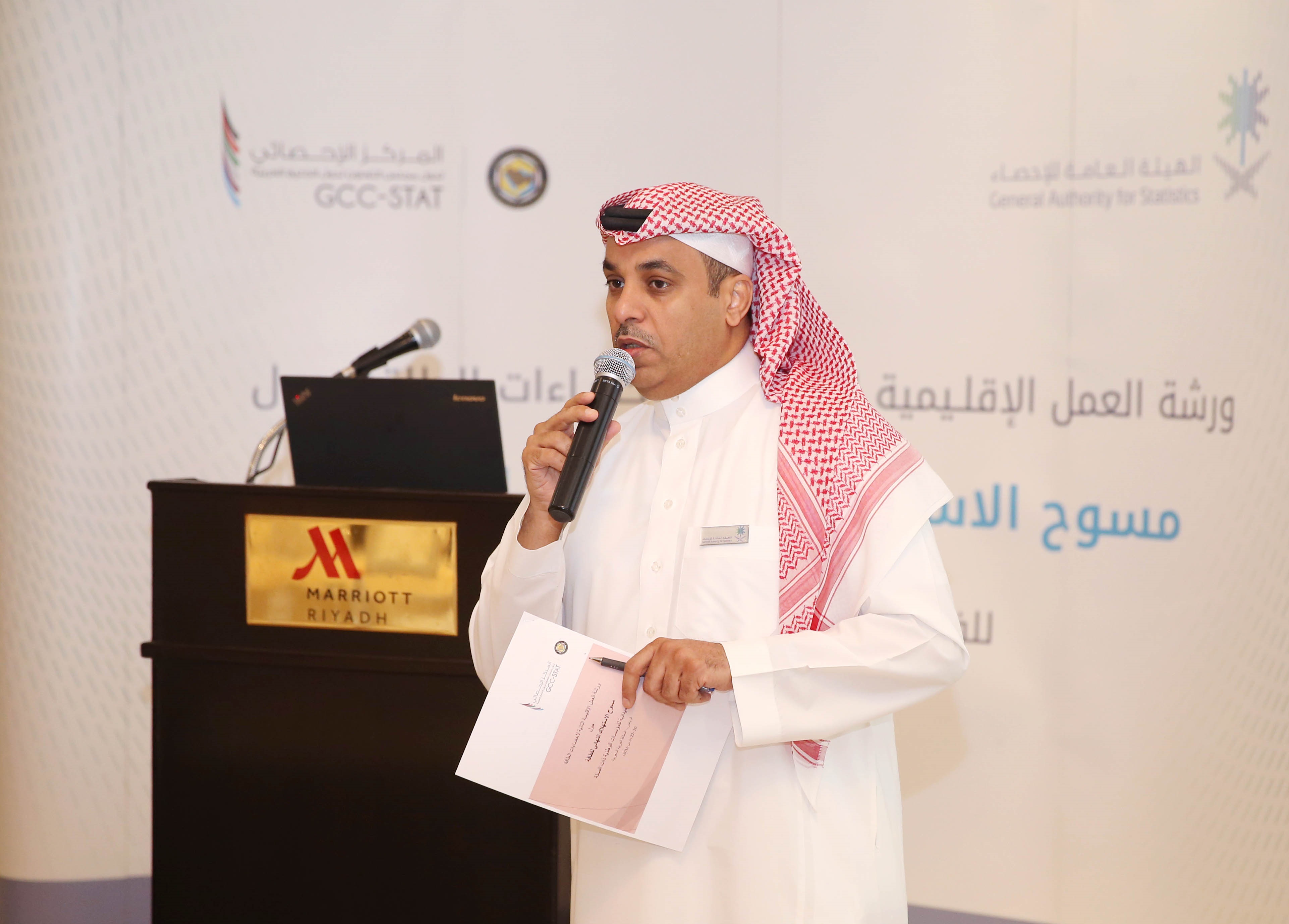
د. التخيفي: نهدف إلى توحيد معايير منتجي البيانات لخدمة مواطني " الخليج "
GCC "Energy Statistics" in Riyadh
Dr. Altekhaifi: We aim to unify Data producers' Standards to Serve "GCC" Citizens
Media center- Riyadh
The Chairman of the GCC Statistical center, the Chairman of the General Authority for Statistics in the Kingdom of Saudi Arabia, Dr. Fahad Sulaiman Altekhaifi expressed his thanks and gratitude towards the leaders of the GCC countries for supporting all programs and activities of the "GCC Statistical centre", as a result of their role in supporting all decisions related to the development of GCC nations. Dr. Altekhaifi asserted that the results of the Energy Statistics' Second Regional workshop about the final consumption of energy surveys held in Riyadh city meet the needs of the national and regional policy makers of the energy sector. It will also support everything that would develop the energy sector in GCC countries. Dr. Altekhaifi also added that through this workshop, the GCC statistical centre seeks to strengthen the cooperation between energy statistics producers, and unify the efforts in the used technical standards. In addition, it seeks to implement International standards by all data producers in member countries.
Dr. Altekhaifi revealed that the most important role of data producers in this meeting is to reinforce the understanding of the international standards related to energy statistics in the statistics system. In addition, it aims to explain the links between energy data groups and discuss the user's needs by enhancing the data and its publishing. Moreover, it aims to unify the efforts to raise the awareness about the methodologies needed in preparing energy statistic in the region. Furthermore, it aims to deepen the participants' understanding of international standards that support energy statistics. Also it clarifies the importance of the final consumption surveys' system.
In this workshop the participants reviews the national experiences of the member countries and the importance of the energy final consumption surveys. In addition, the participants visits several energy sector related entities in the kingdom of Saudi Arabia. This workshop continues until 22 March, 2016.
It is worth mentioning that The GCC Statistical Centre was established in June 2011 to provide a common official pool of statistics and data for the member states of the GCC. It was also established to support the statistical work of national statistical centers and planning entities in GCC countries.. The Charter was officially endorsed in December 2012 by the GCC Supreme Council (comprised of heads of member states: United Arab Emirates, Kingdom of Bahrain, Kingdom of Saudi Arabia, Sultanate of Oman, State of Qatar and State of Kuwait).
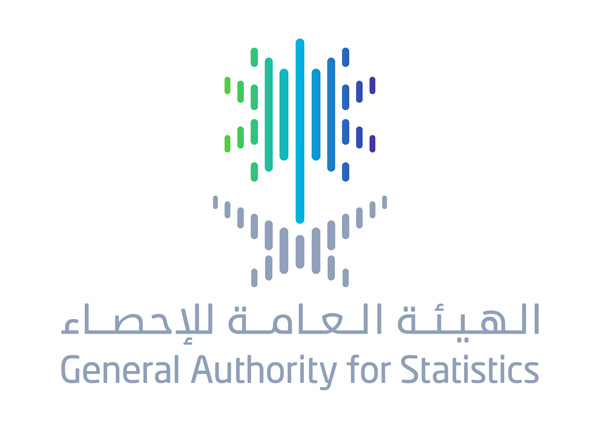
" الإحصاء " : دقَّة المعلومات التي يُقدِمُها المواطن ركيزة أساسية لقرارات ومشاريع حكومية
Updating the general framework of population and housing paves the way for a new labor force survey
"statistics" the accurate information provided by citizens is essential for governmental resolutions and projects
Media center- Riyadh
Supporting the resolutions of nationalization and reduction of "unemployment", the General Authority for Statistics ( GaStat ) stresses the importance of information accuracy provided by citizens in the activities of labor force surveys as these information are essential for the development resolutions and can determine many national programs and projects.
During his participation in the first Saudi conference for job creation held in Riyadh, GaStat chairman, dr. Fahad Altukhaifi stated that the citizen is considered the base for development building , that is through the information that he/she provides during the process of conducting surveys done by GaStat crew.
As for the survey of labor force, dr. Fahad confirmed that it is one of the most important household surveys conducted by GaStat . it provides fundamental data about the labor force and its characteristics, which helps in setting the plans to develop the labor market in Saudi Arabia, analyzing and evaluating the economic policies, and helping the decision makers in setting the labor market policies with all the related issues such as unemployment and training. The labor force survey results are very important too as they collaborate in building a data base for the Saudi labor market in order to cope with the interest and anticipations of the labor force statistics nationally, regionally, and internationally. The results also support all tendencies and efforts exerted by the public and private sectors in the process of nationalization. Moreover, they give an opportunity to collaborate in building a base for these information that can be beneficial in preparing and planning the future economic and social development programs. The authority conducts this survey every six months , it intends to conduct it every three months in 2016 according to the latest international standards and methodologies.
The authority chairman added that providing detailed data about the national and non-national labor force ,classified by their economic, social, and demographic characteristics, is one of the main objectives of the survey, in addition to its role in measuring the averages of economic collaboration, economic support, and employment and unemployment by many variables. It should also provide data about some training programs for job seekers, and be familiar with the vocational structure and the economic activity of employed people by a number of variables and the average of their salaries.
Dr. Altukhaifi thanked all governmental entities who work with GaStat . he assured that the authority is working with all governmental entities which are related to the Saudi labor market ( ministry of labor, human resources development fund, general organization for social insurance, ministry of civil services, and the national information center in the ministry of interior) in order to develop the survey on one hand and benefit from its results on the other hand. The authority is working with them also to unify the efforts so that they can get accurate data of the most important indicators in the Saudi labor market.
It is worth mentioning that the labor force survey results depend on the data and information of (33.500) households, distributed among all Saudi administrative regions, as a sample that represents the society. The households are chosen according to international and scientific fundamentals applicable in the population and housing censuses all over the world . GaStat has started preparing for the next survey after updating the general framework of population and housing which depends on the 1431 framework as it is considered the main source from which samples are collected to conduct future researches.

د. التخيفي : الإحصاء يدعم قرارات من شأنها الحد من ظاهرة ارتفاع الأسعار
The GCC Statistical Centre Launches the General Consumer Prices Index
In pursuit of the Gulf Cooperation Council (GCC) countries to find a number of coordinating and corrective procedural policies that will help in reducing the phenomenon of rising prices in the GCC countries, the GCC Statistical Centre launched the project of "GCC Consumer prices index", and "the statistical centre data portal" in Muscat, Oman, under the auspices of His Excellency Sheikh Khalid Almarhoon, the Minister of Civil services in Oman.
The chairman of the General Authority for statistics in Saudi Arabia, the chairman of the GCC Statistical center in its current cycle, Dr. Fahad bin Sulaiman Altekhaifi, asserted that the index number is considered to be an important tool to support decision makers in all private and public sector entities in GCC countries to prepare coordinating and corrective procedural policies that contributes in reducing the phenomenon of rising prices in the GCC countries. It is also considered to be an economic phenomenon with social dimensions. In addition, the new indicator will provide a unified prices statics data base with all its details, which will help the beneficiaries to use the information in various related fields.
Talking about the statistical centre data portal, Dr. Altekhaifi added that the goal of inaugurating the portal is to enable the observation of statistical data and documenting achieved advancements in the indicators of the GCC countries in different economic, social, and energy sectors. In addition, its goal is to provide information services that contributes in raising statistical awareness.
On the other hand, in the speech of Dr. Altekhaifi, he asserted on developing and supporting the statistical and institutional abilities, to keep pace with the statistical requirements on the GCC countries' level and internationally. He also asserted that this is one of the most important common goals on the strategic level of the GCC countries. He also added that the authorities and Gulf statistical centers are seeking to continuously reinforce and enhance the quality and quantity of statistical services, and develop, expand and market the statistical publishing. Also, it seeks to show the GCC countries' region as a unified social and economic region through unifying the national statistical strategies in the GCC countries with the combined statistical programs needs according to the best international practices. Altekhaifi also explained that everyone is working on building statistical culture and raising statistical awareness, in addition to reinforcing the actual and correct use of statistical data and information in decision making and policy making in GCC countries.
Altekhaifi also revealed about ten of the most important projects that are considered to be the top statistical priority determined by the GCC statistical centre, which are: the national accounts, environment and energy, financial executive statistics, balance of payments, development, progress and sustainability indicators, short term prices and indicators, unified registered population census (year of 2020), foreign trade, administrative data, job market, and the statistical standards, categories, methodologies, and data quality.
It is worth mentioning that the GCC statistical centre was established in September 2011, and its organization was approved in 2012 by the supreme council of the GCC to be the official source of statistical information and data related to GCC countries. It was also established to reinforce statistical and informational work of the national statistical centers and planning in GCC.
وزير الاقتصاد يُدشن عمل الهيئة العامة للإحصاء وبوابتها الإلكترونية...هيئة الإحصاء توقع 4 اتفاقيات مع جهات حكومية وخاصة
Minister of economy launches the general authority for statistics and its electronic portal
The authority of statistics signs 4 agreements with private and public sectors
Media center- Riyadh
Minister of economy and planning, chairman of the general authority for statistics, Eng. Adel bin Mohammed Faqeeh, launched the first day of working in the statistical field with a new structure and identity. This was an implementation of the supreme decree issued on 26-12-1536 H which states transforming the central department of statistics to be a general authority called ( the general authority for statistics). The authority is financially and administratively independent. In his speech that was declared in the launching event which was held in Marriot hotel, the minister expressed his gratitude and thanks to the custodian of the two holly mosques, king Salman bin Abdulaziz Alsaud, may God protect him, for his approval to transform the central department of statistics to be an independent authority. He confirmed that the work will start officially in the general authority for statistics as a result of many supreme directives, orders, and resolutions that support and enhance a lot of governmental sectors by transforming them into independent authorities that provide services compatible with the rapid changes and developments.
On his part, the authority's general director, dr. Fahad bin Sulaiman Altukhaifi, in his name and on behalf of all the staff of the central department of statistics , and all those who work in the statistical sector , he expressed his gratitude and thanks to the custodian of the two holy mosques for his supreme approval to transform the central department of statistics to a general authority. Dr.Fahad said that this transformation process has been done through six fundamental tracks which can be briefed in a working strategy that is all about the authority’s clients and partners to fulfill the actual need of statistical products, then developing these products and services and improving statistical and data methodologies and procedures. In addition, it focuses on upgrading the level of information technologies and digital infrastructure in order to give the products the ability to start from a very tough base that can cope with all technological changes. It also concentrate on raising awareness and literacy in the statistical field, and finally structuring the authority’s different tasks and departments. He assured that the general authority for statistics’ role has become more important as long as there are national transformation projects as it is very crucial to provide accurate statistical data and effective indicators besides developing the measurement tools.
On the first working day and after the transformation process, the authority’s general director has announced that the first of Muharram of the next year will be the day in which the information bank will be issued. This bank is one of the statistical development national strategy’ aspects, which aim to organize statistical data and information in Saudi Arabia, to guarantee providing the governmental sectors and individuals with statistical information and indicators through an easy and accurate technique. This is to support the development decisions via collaborative system, which starts with electronic linking between all data resources in many related sectors. Furthermore, minister of economy and planning Eng. Adel bin Mohammed Faqeeh has launched the electronic portal of the general authority for statistics. In this portal, the users can get all the needed information in very easy and direct ways through many windows and according to the international statistical and technical standards. On the first working day, four agreements have been signed with different private and public sectors. The authority has signed two agreements with the national information center in the interior ministry and e-government program (yesser). These agreements have been signed to develop the techniques of collecting, exchanging, and integrating data. The third agreement has been signed with the national center for communication, aiming to develop the mechanisms of communication with disabled people. It also aims to provide statistical content in sign language. On the other hand, the central department of statistics and information ex-directors and retired employees were honored.
After the launching event, the authority held an introducing workshop with many partners from both the private and public sectors. This workshop aimed to introduce the authority and its roles. The participants watched a detailed presentation about the products and services in addition to the interactive statistics window and a brief of the statistical awareness. The minister of economy and planning revealed that the statistical sector partnership with the private and public sectors will open many opportunities for the statistical sector to be constantly developed and improved in order to be able to effectively collaborate in supporting any developmental decision taken by any private or public sector in all fields of national development. It is worth mentioning that the ministers’ council resolution issued on 13/1/1437 H included the approval of general authority for statistics structure, and made it the only authorized entity that technically and structurally supervise the statistics sector. It also made it the only responsible authority for creating thorough national statistical databases in different fields. Moreover, it made it the only responsible entity for managing the authority affairs and creating its own board of directors

ستة مسارات عملتْ عليها "الإحصاء" خلال 90 يوم.. أربعة أيام ويبدأ القطاع الإحصائي نقلته الجديدة
"Statistics" worked on six tracks in 90 days
Four Days and the Statistical Sector will Start a New Era
Media Center
The Saudi statistical data and information sector is starting a new era after declaring the changing of the central department of statistics to be an authority named" the general authority for statistics". This transforming will start officially on Wednesday 1st of jamad first.
Director of media and statistical awareness department and the spokesman of the authority, Taiseer Almufarij states that working under the umbrella of the general authority for statistics is considered an implementation of the supreme decree number ( 64283) in 26/12/1436 H which declares transforming the central department of statistics to be a general authority called the general authority for statistics. This authority is financially and administratively independent. The supreme decree gave ninety days for the transforming process. The countdown is about to finish now and this Wednesday will be the first official day to work under the new name. Almufarij confirmed that this transforming is not only about changing the name or identity, but changing content, techniques, and mechanisms as the statistical sector must cope with all the rapid changes around it otherwise it cannot go farther. With the increase of commercial transactions, international investments, social and economic changes, mass data revolution , and the development of digital media and portable technologies, it has been a need for the statistical work to go through a vital transforming process in order to satisfy the clients and fulfill their needs which require the authority to establish a mutual partnerships, estimate their current and future needs, unify the information sources, facilitate access to this sources, and provide more advanced statistical products.
Almufarij said that the general authority for statistics is undergoing a transforming plan that has six major tracks: concentration on the client strategy, developing products and services, enhancing methodologies and procedures, upgrading information technologies and infrastructure, statistical literacy and building competences, and structuring all the authority's different tasks and departments in order to keep developing the authority and making it a distinct institution.
It is worth mentioning that the Saudi statistical work has started in a very early era of the Saudi development history. It has started in 1349H /1930 AD and continued for thirty years till the issuance of the general statistics system in royal decree number (23) which made the statistical work a sector that refers technically and administratively back to an official system that cooperated in organizing the statistical sector by setting the rules of relation between the central department as it is the only central department for statistics and the other sectors. This system aimed to activate the statistical work and make it more comprehensive, and raise statistical awareness. During the last fifty eight years, the department worked on many surveys, censuses, and indicators in many different fields in Saudi Arabia.

د. التخيفي : كلمة الملك سلمان رسمتْ خطوط الإدارة الجديدة للتنمية

مدير المصلحة: تحويل الاحصاءات الى هيئة يصنع شراكات فاعلة
GaStat Launches the “Statistical Calendar” for 1438H Hajj Season
More than 450 Statisticians Started this morning
GaStat Launches the “Statistical Calendar” for 1438H Hajj Season
Through its official website www.stats.gov.sa, the General Authority for statistics (GaStat) launched the statistical calendar for the 1438H Hajj season. It shows the publishing dates of services provided by the Kingdom to pilgrims, in addition to the statistics of domestic and international pilgrims.
GaStat official spokesman, Mr. Taiseer Almofarrej, explained that the statistical calendar with its content, from statistics and numbers, aims to show the efforts made to pilgrims from more than 45 public and private entities. On the second day of the current month of Dhu al-Hijjah, the statistics of services provided to pilgrims from health and medical services, public services, transportation sector services and telecommunication services will be announced respectively. Then, the number of domestic and international pilgrims arriving to Makkah will be published and updated daily until the evening of the 9th day of Dhu Al-Hijjah when the total number of pilgrims will be announced. Mr. Almofarrej added that GaStat will issue the detailed bulletin of Hajj statistics the morning of Eied day (10 Dhul Al-Hijja ), he also added that all information will be available at GaStat official website on schedule.
On the other hand, GaStat official spokesman explained that the enumeration of pilgrims coming to Makkah has started the morning of Wednesday (1st of Dhu Al-Hijjah), by more than 450 statisticians, administrative and technicians from GaStat. They are distributed on all main centers in Makkah, Medina, Jeddah and Alta’if, and they work 24 hours until the sunset of Arafah day, next Thursday (9th of Dhu Al-HIjjah).
GaStat called all pilgrims coming to Makkah for Hajj to provide the necessary statistical data required in all Pilgrims enumeration centers this year which are (Makkah/Jeddah Highway) Road , (Makkah/old Jeddah)Road, Altan’eim center(the connection road between Medina and Makkah), AlShrai’e center (the connection road between Makkah city and Alta’if city through AlSail), Alkar center (the connection road between Makkah and Alta’if through Alhada), and the Southern center ( Allaith -Jazan road near Als’adeiah village) in addition to the Hajj statistics supportive centers in Jeddah at King Abdulaziz international airport, mass transportation stations, and other locations in Jeddah, Medina center (Abiar Ali and ‘Ashirah), and Alta’if center (Alsail Alkabeer).
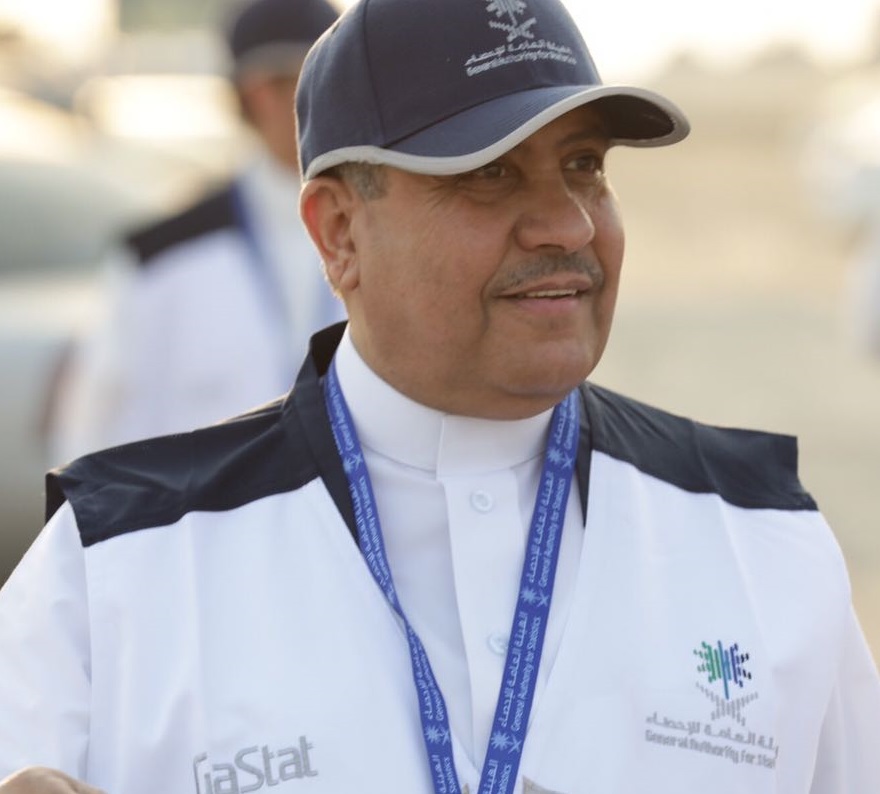
" الإحصاء ": الإعلان النهائي لأعداد حجاج 1438 هـ بعد مغيب شمس يوم عرفة

قرابة 24 مليون حاج خلال عشر سنوات تشرفت بخدمتهم المملكة العربية السعودية
GaStat Enumerates Pilgrims Every Year
Saudi Arabia has been honored to serve nearly 24 million pilgrims in 10 years
According to the official statistics of the General Authority for Statistics (GaStat), the total number of pilgrims that Saudi Arabia has been honored to serve during the last ten years has reached 23,935,354 pilgrims. The last Hajj season (1437H) recorded the lowest number of pilgrims during the last ten years as it reached 1,862,909 pilgrims. While the year (1433H) recorded the highest number of pilgrims during the last ten years as it reached 3,161,573 pilgrims.
The official spokesman of Gastat, Mr.Taiseer Almofarrej, explained that the task of pilgrims enumeration every years is one of the tasks that Gastat has the honor of. It started since 1390H since Gastat was called (the Central Department of statistics), in order to provide accurate information that helps all state agencies in planning and development of everything related to serving Hajj visitors. This mission continued during all these years to witness developments and enhancements in the enumeration techniques every year to be more accurate and comprehensive. Mr. Almofarrej added that the Hajj statistics program aims at the completion of all future planning programs to ensure providing the necessary services needed by the guest of Makkah, whether social, health, security, food, or transportation services. This is done through using a time series of accurate data about the number of pilgrims, in addition to the estimation of labor forces needed for providing the necessary services for pilgrims during Hajj season every year. The data and number of pilgrims is also used by relevant systems who studies the preparations and main facilities in Makkah city and holy places, and take it into consideration when preparing the necessary plans. In addition, accurate data and information about Hajj statistics is provided to researchers, students, and individuals who are interested in this field. The data is also used in the evaluation of activities and events made by relevant entities who serve pilgrims, in addition to identify the method of arrival of domestic and international pilgrims.
The official spokesman stressed that GaStat will be announcing the number of pilgrims periodically starting from the 1st of Dhu al-Hijjah. GaStat will also announce the final and official number of pilgrims on the evening of the ninth day of Dhu al-Hijjah through the Hajj statistics bulletin. The Bulletin will include detailed results about: number of domestic pilgrims, international pilgrims, pilgrims by gender, pilgrims by nationality, pilgrims by arrival destination, number of cars carrying pilgrims by type, and other detailed data.
It is worth mentioning that the number of pilgrims in the last ten years exceeded 3 Million pilgrims in one time, and it exceeded 6 Million pilgrims 6 times. The number was lower than 2 Million in 3 Hajj seasons, and last year was the lowest according to the following table:

الهيئة العامة للإحصاء تبدأ الخميس المقبل بزيارة أكثر من 57 ألف أسرة
In cooperation with the Communication and Information Technology Commission and the General Sport Authority
GaStat starts to visit more than 57,000 households next Thursday
The General Authority of Statistics (GaStat) will start next Thursday, 19 Shawwal 1438H (13 June 2017), to visit more than 57,000 households in all regions of the Kingdom in coopereation with the Communication and Information Technology Commission and the General Sport Authority to conduct 3 household surveys: the survey of ICT’s access and use for households and individuals, sports survey for households, and the labour force survey for the third quarter. GaStat calls upon all citizens and residents to cooperate with the statisticians working in the field in 13 regions of the Kingdom including their cities and provinces. The work of than 450 field researcher will continue until 25 Dhu al-Qa’dah 1438 H (17 august 2017).
GaStat official spokesman, Mr. Taiseer Almofarrej, explained that the household sport survey is one of the requirements of the Saudi Vision 2030 in cooperation with the General Sport Authority. It aims to provide recent indicators about the extent of playing sports for households. Through its results, stakeholders will learn about the reasons for playing sports or not and they will get updated statistics about the relationship of households with sports. It will also provide a comprehensive picture on the size of community participation in sports and physical activity. In addition, it will provide data on the ratio of sports practitioners within the household who practice sports on a regular basis, at least once a week. It also provides data on the percentage of sports practitioners in public facilities, clubs or sports centres, and the number of times a person is engaged in sports during the week, and the reasons why a person may not exercise.
Mr. Almofarrej added that this survey coincides with the Labour Force Survey for the third quarter of this year which aims to provide detailed data about national labour force, measure the rates of employment and unemployment, provide data on employed and unemployed individuals, identifying the average monthly wages of the workers, provide data on the average weekly actual working hours by occupation, and economic activity of workers, and data on formal and informal workers. The results will be published in the Labour Market Bulletin, which was recently launched by GaStat.
Regarding the survey of ICT’s access and use for individuals and households, GaStat’s official spokesman said that in cooperation with the Communication and Information Technology Commission aims at providing updated data and indicators on the extent of household and individual’s access to information and communication technologies. It includes: the availability of communication and information technology devices, the extent of using mail services by households and household access to ICTs. The survey will also provide individual data including: the extent to which information technologies are used for individuals, age groups, educational and occupational status, difficulties, places of use and reasons for not using ICTs.
On the other hand, Mr. Taiseer Almofarrej confirmed that the GaStat has been keen to involve all relevant parties from data producers and users in developing its statistical products from creation to publishing through integrated partnership. A training program was recently held for the supervisors of these surveys, in which the Communications and Information Technology Commission and the General Sport Authority has participated.
GaStat has confirmed that all information will be treated as an information basis which is reliable and can be used by development decision-makers in all relevant government entities that will serve the interest of citizens and residents. Gastat also has mentioned that al statistical researchers carry official badges and they are officially authorized to collect data to be kept confidential in accordance with the general statistics system issued by the Council of Ministers. GaStat also made available on its official website www.stats.gov.sa the opportunity for students and interested individuals to view field search forms on which the data will be collected. All households and establishments may inquire through the toll free number 8001240440 about this work or other coming work.

مجلس الوزراء يوافق على التعاون الإحصائي مع هولندا وكوريا
Administrative-based Census and Centralized Data System Included
Cabinet Okays Statistical Cooperation with Netherlands and Korea
As part of its continuous support for statistical sector in Saudi Arabia, the Cabinet has approved in its sessions held on Ramadan 3rd and 17th respectively, the mandate to the Minister of Economy and Planning or his nominee for holding discussions with the Dutch and Korean sides on statistical development, and to sign memorandums of understanding (MoU) with them in this regard.
His Excellency President of the General Authority for Statistics (GAStat) Dr. Fahad Sulaiman Altekhaifi hailed the decision stressing:
“The statistics sector in Saudi Arabia receives ongoing support from our leaders at all levels; establishing the importance of statistics in development. These agreements aim to develop our statistical endeavors based on the world’s best practices in the field. Also, our discussions with the Dutch side will address developing modern mechanisms to implement register-based census in compliance with the internationally recognized standards, including a defined statistical approach to run censuses, document data, and to store them in statistical archives. Also, this includes developing the necessary technical tools to create a comprehensive system from census databases, and leverage them in statistical surveys and studies, those implemented by GAStat, public or private agencies. The bilateral cooperation between KSA and Netherlands enhances sharing statistical awareness programs to ensure community participation and to share success stories, to boost the exchange of expertise between both countries, and to take part in statistics-related training courses, conferences, forums, seminars and workshops."
As far as cooperation with Korea is concerned, GAStat President noted: “It features the development of technical mechanisms to collect and publish statistics in accordance with the internationally recognized standards, to identify basics needed to create a comprehensive system using various statistical databases and to share expertise as to the requirements to build a centralized data center, which will automatically be connected to all public agencies. Also, this is meant to secure the tools needed to activate these centers, and to develop public policies and mechanisms to provide statistics-based technical and advisory services to both public and private entities.
It should be noted that GAStat has undertaken a series of preparatory steps with several local and international organizations towards finalizing the preparations for the (1440H – 2020) census, which will be the first register-based census using administrative records (civil registration number, national ID number, resident ID number), as well as the national home address. Unlike earlier censuses, this census features a comprehensive electronic connectivity with a number of stakeholders, including the National Information Center, Ministry of Education, Ministry of Housing, the Saudi Post, as well as various sectors in concern with the citizen, resident and housing data.
